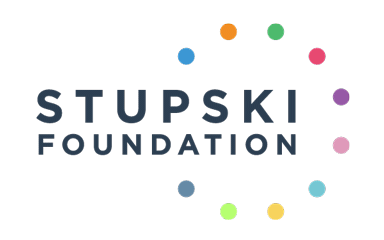Rooted in place and dedicated to building connection through food, Kahaluʻu Kūāhewa and Hui Mālama i ke Ala ʻŪlili cultivate healthy and abundant communities across Moku O Keawe.
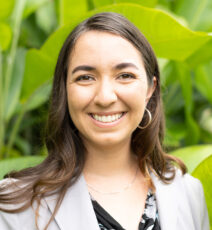
Wind sweeps through cane grass swaying by the road winding through Pa‘auilo and Koholālele. The once sustainable and diverse ahupua‘as 1 on Moku o Keawe 2 provided ample food and medicines for 100 generations of Kānaka ‘Ōiwi 3 who stewarded these ecosystems.
Buried under rows of eucalyptus planted on barren fields already sapped by years of sugarcane plantations lies a rich history of abundance and food sovereignty. Now mono-crop forests stretch out to the horizon, reminding us of the displacement and erasure of Kanaka ‘Ōiwi from this land.
Before Western contact in 1778, Kānaka ‘Ōiwi produced enough food to feed a population of over 300,000. The colonial occupation of Hawai‘i decimated traditional foodways, natural resource management practices, Indigenous stewardship, and the traditional Hawaiian land tenure system. As a result, the state imports 80%-90% of its food to feed the islands’ 1.4 million residents plus 10 million annual visitors.
A legacy of responsibility
Today, the islands face high rates of food and housing insecurity.
“This is the context for why families continue to struggle in this place. We’re not collectively in a state of thriving abundance,” says Dr. No‘eau Peralto, executive director and co-founder of Hui Mālama i ke Ala ‘Ūlili, who is working to ho‘oulu ‘ai 4. No‘eau sees ho‘oulu ‘ai as the foundation for a thriving nation. “Food sovereignty, food security, the different ways we talk about it today are core to Kānaka understanding of governance,” said No‘eau. Food sovereignty is rooted in community efforts to reclaim agency over food, land, water, and livelihoods.
Over a decade ago, Hui Mālama i ke Ala ‘Ūlili began when a hui 5 of ‘ohana 6 started clearing a small patch of invasives, replacing them with native staples like ‘ulu 7 and kalo 8. Shortly after breaking ground, more and more people began gathering, getting their hands dirty, and growing their own food. Soon, the soil was teeming with life, and the land became a community space to come together and mālama 9 for the ‘āina 10.
Generationally rooted to this land, Peralto and Hui Mālama i ke Ala ‘Ūlili co-founder Haley Kailiehu feel it is their kuleana 11 to care for the land.
We feel a sense of responsibility to those who came before us, who we inherit the legacy of and benefit from, all the sacrifices they made for us to be here; to our present, our ‘ohana, who we’re accountable to and those in the future who will inherit our legacy for better or worse.
Dr. No‘eau Peralto
Photos courtesy of Hui Mālama i ke Ala ʻŪlili.
Stewards for the next generation
Guided by its kuleana, Hui Mālama i ke Ala ‘Ūlili continues to grow and expand their stewardship. In fall 2023, the county of Hawai‘i granted Hui Mālama i ke Ala ‘Ūlili a 75-year lease for 1,000 acres of land in Koholālele. This new parcel allows the organization to mālama a continuous corridor from the mountains to the sea. In Koholālele, the team is working to restore native ‘ulu agroforestry across a former eucalyptus plantation. Each eucalyptus felled and cleared becomes mulch and is returned to the earth to nourish the emerging native forest. One ‘ulu tree can feed a family of four for 50 years. The fruits of this labor will supply the community with local food for generations to come.
No‘eau’s vision for the future of this land centers around how their actions today will affect the generation stewarding this region in 2098 when the lease is up for renewal. He contemplates who these future stewards will be: “They are the seeds being nurtured within each and every one of the keiki 12 that our hui has the privilege of working with and learning with every day. They are the future leaders of our community, who will steward this ‘āina for the keiki aloha ‘āina 13 of the 22nd century and beyond. For now, it is our turn to carry this kuleana in ways that will make them proud.”
In the neighboring ahupua’a of Pa‘auilo, Hui Mālama i ke Ala ‘Ūlili stewards a 5-acre educational community garden hub that produces kūpuna 14 crops to improve the health of the ‘āina and the community. Young keiki and high school students learn to mālama ‘āina through gardening, cooking, environmental observation, and mo‘olelo 15 of this region.
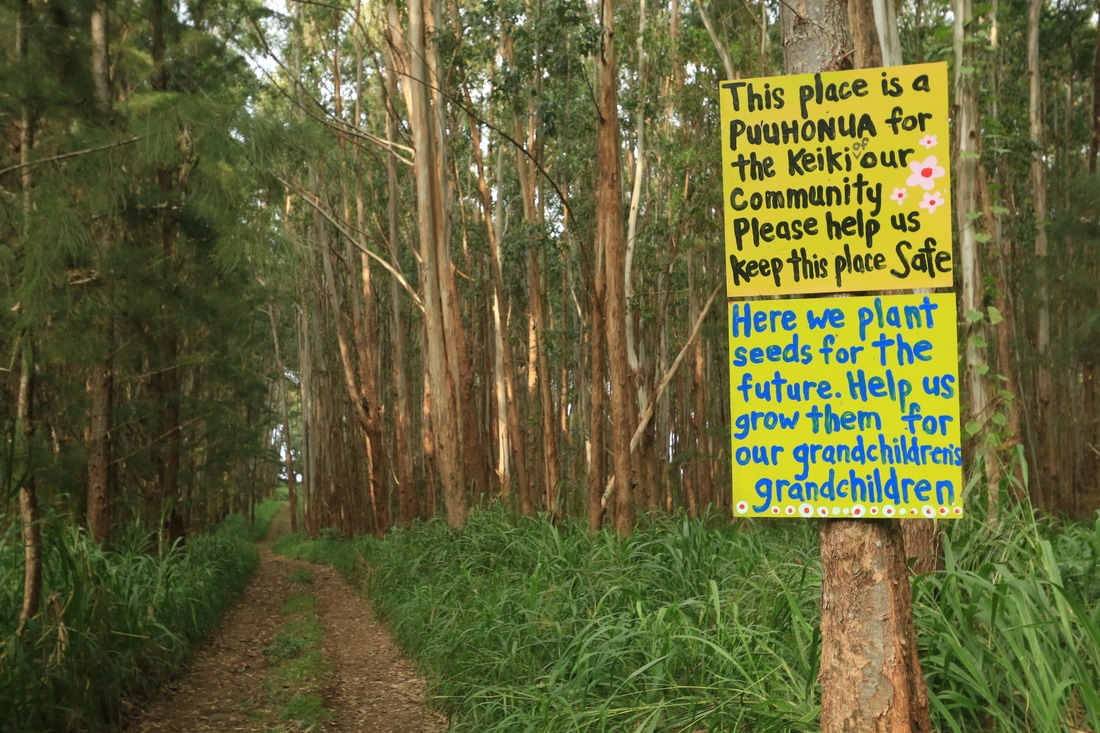
Learning stories from the past helps us learn from previous mistakes and successes. No‘eau believes, “For us as Kanaka, as Hawaiians, an important part of our work is looking to those ancestral sources and ancestral models. We’re not reinventing the wheel, so to speak, but engaging in traditions of innovation that are rooted in the rigor of tradition, history, and ancestral knowledge.”
Part of this lineal practice of ingenuity is adapting agricultural methods in the face of climate change. Crops that thrived in this region 300 years ago now will wilt due to drastic changes in temperature and rainfall. At its core, this tradition is about intimately reconnecting to culture and land. For Native Hawaiians, the ‘āina is a living entity and genealogical ancestor. To tend to the earth is to care for an elder. No‘eau hopes teaching mo‘olelo to today’s keiki will help them connect to their kūpuna and unique gifts. When the time comes for them to make stewardship decisions on this land, they will be stepping up with generations behind them.
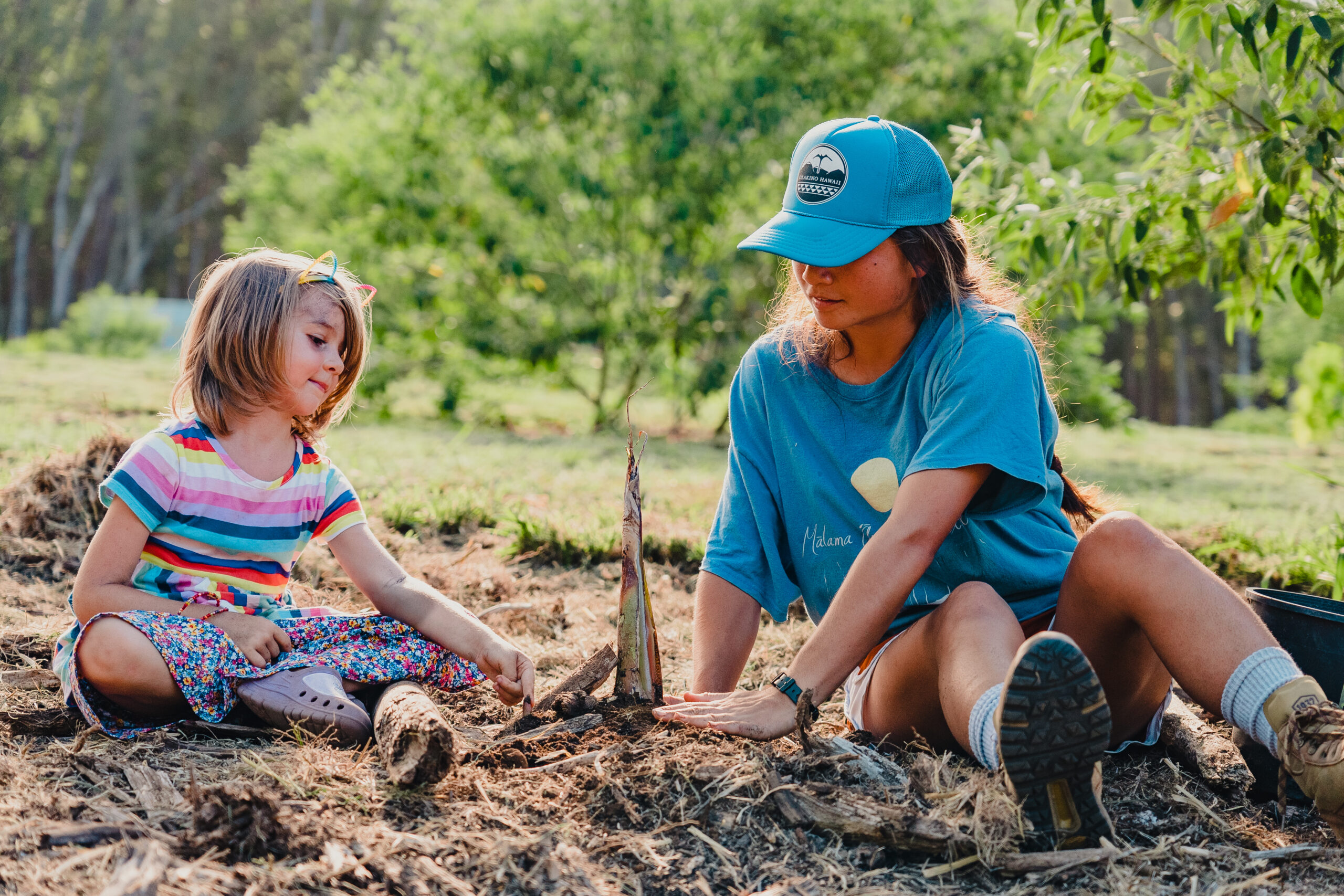
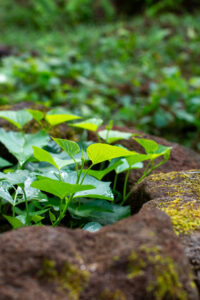
A food system that flows
Like No‘eau, Jesse Kaho‘onei believes, “To achieve food security, we have to look back to our past to look to where we are going in the future.” Kahalu‘u Kūāhewa, located 70 miles from Hui Mālama i ke Ala, on the western slopes of Hualālai, has a long legacy of agricultural production. Jesse and Kim Kaho‘onei, directors and land stewards of Kahalu‘u Kūāhewa, tend to the largest intact portion of the Kona Field System, agricultural land predating colonization in the islands. The land is home to over 3,500 archaeological features created by ancestral Kanaka ‘Ōiwi to support agricultural production. Before their stewardship began in 2015, the soil was depleted, and few native species persisted after decades of monocropped coffee production.
Hawai‘i’s history holds deep culture and knowledge. Still, it carries land loss, colonization, racism, and generational trauma that continues to impact the health of people and the environment. Looking at some of the many archeological features on the land, Jesse reflects on the ancestral land use as a road map for the future: “The foundation of what that food system looked like is right here … within these stone planters, stone mounds, in the way the kūpuna were using our most important resource for us Kanaka, our wai, our water.” In Olelo Hawai‘i 16, the word for wealth is “wai wai,” which directly translates to “water water.” Jesse expands, “The way our systems worked back in the day, you couldn’t hoard water, but water was constantly flowing. What does it mean to have that wealth? It means you can feed your community, and it’s not something you can hoard but something that is offered and constantly flowing.”
Today, water is hoarded and privatized, streams are diverted, and aquifers are polluted, leading to critical consequences, including drought, wildfires, and the destruction of life. Jesse and Kim see a need to return to ancestral models of land use and restore a communal agricultural system to protect not only the wai but also the ‘āina and future generations of Kanaka.
Learn more in this video about the work of Kahalu‘u Kūāhewa and Hui Mālama i ke Ala ‘Ūlili
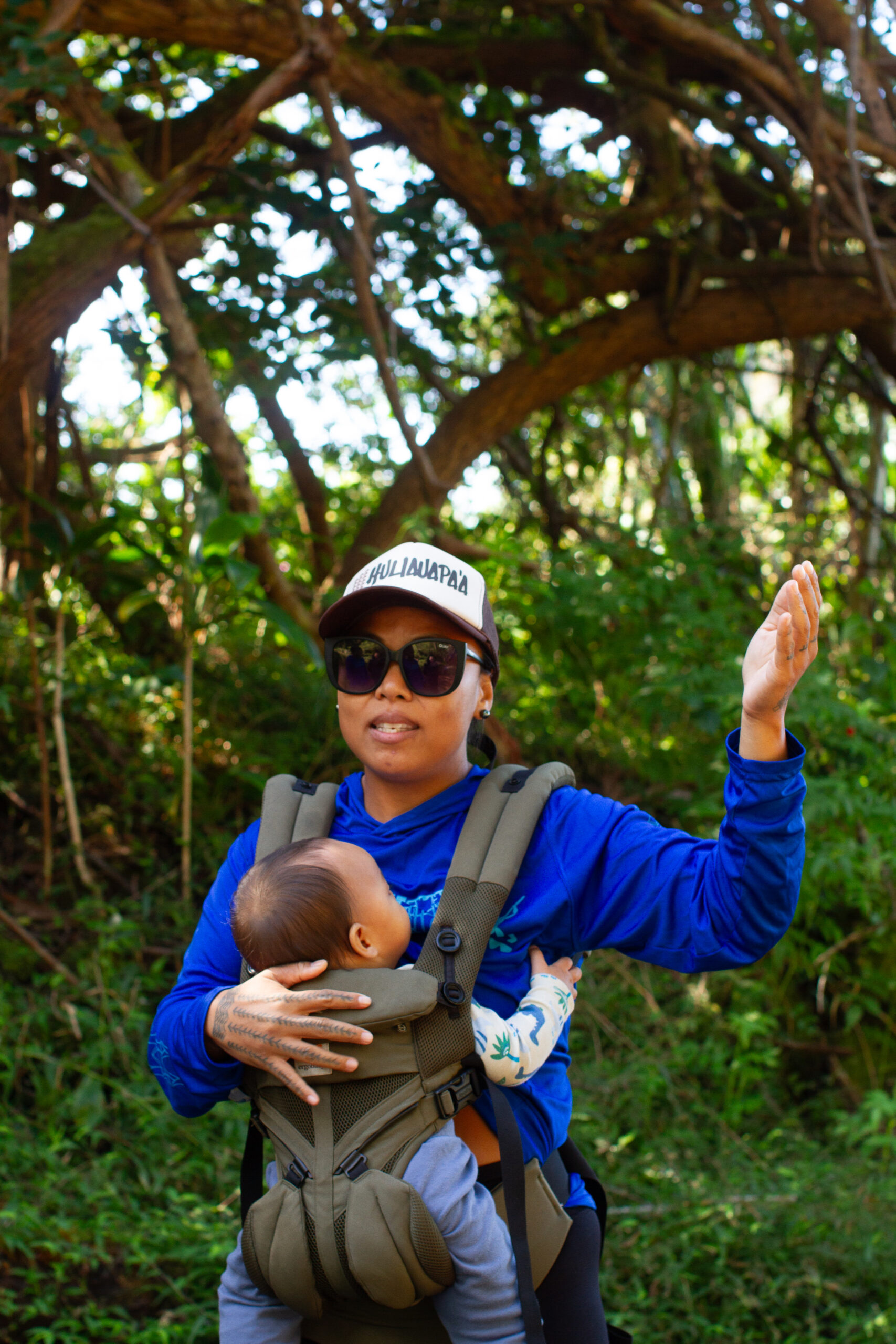
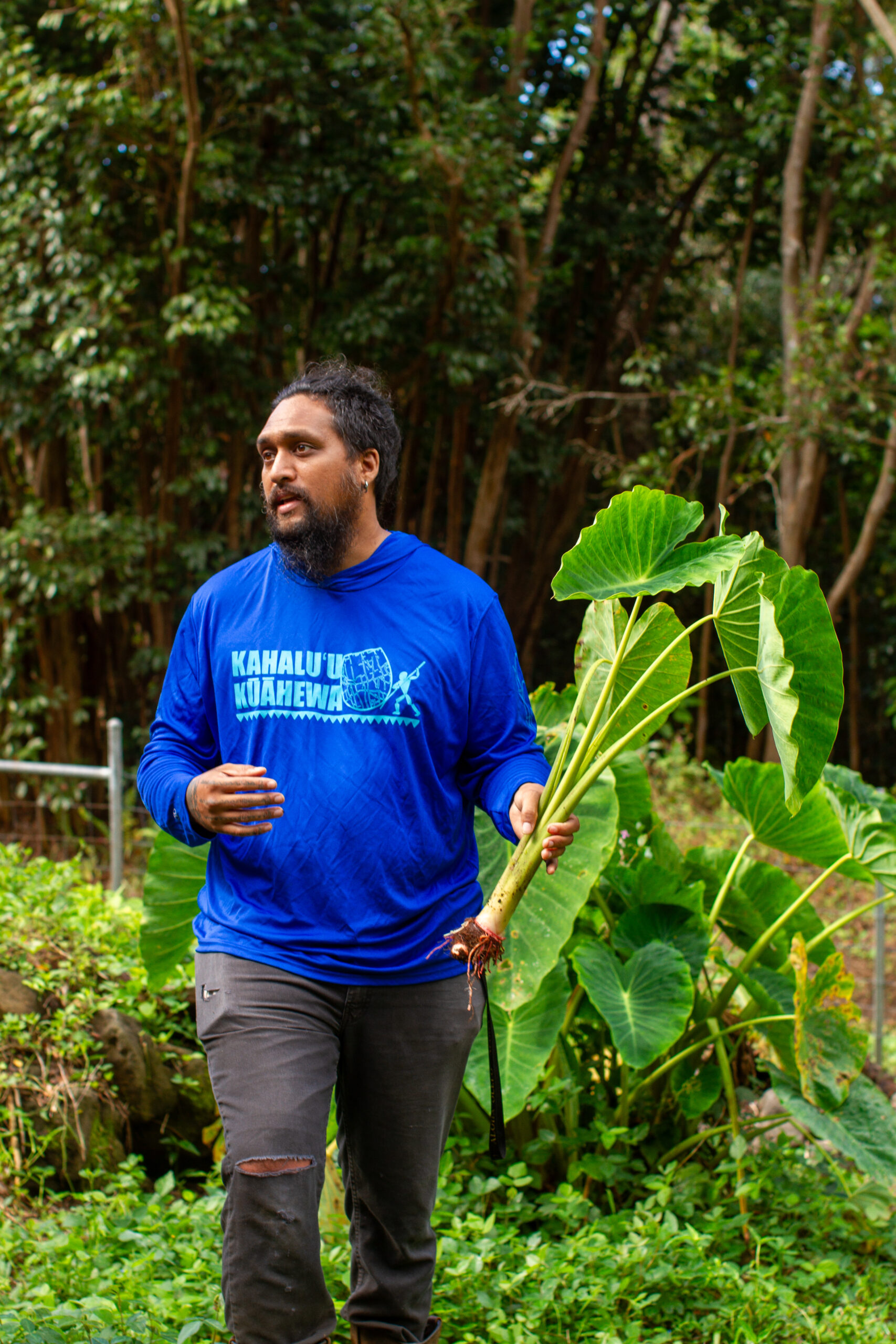
Kahalu‘u Kūāhewa is working to revitalize the Kona field system through Indigenous grassroots initiatives and sustainable agriculture practices. They perpetuate ancestral knowledge and reconnect Kanaka to ‘āina by providing ‘āina-based education and opportunities to learn traditional Hawaiian knowledge and practices while supporting local food production and protecting the island’s biodiversity. Jesse adds, “Our main goal is the restorative use of this system to be productive and create abundance, not just from the food we eat, but abundance in knowledge, abundance in well-being, all those things that come from actually working on the land.”
Kahalu‘u Kūāhewa is founded on laulima 17. Kim explains, “Laulima literally translates to 400 hands. Figuratively, it means many hands working together. Look at a tree with 400 leaves, all working together to get energy from the sun and bringing it together for one common goal: nourish the tree.”
Laulima, support from the community, and volunteers make the ecological restoration work at Kahalu‘u Kūāhewa possible. Jesse and Kim’s vision for the future of agriculture is rooted in laulima and the practices of their ancestors.
Jesse reflects, “Kamehameha, he created this great, vast māla 18, and he said, ‘Anyone can come and take what you need from here to feed your families.’ But for every kalo, for every taro that you pull up, you plant the huli back in its place. For every sweet potato you pull up, you plant another in its place. For every sugarcane you pull up, you plant another in its place. He said, ‘This is how we provide for generations and generations.’” Jesse and Kim now tend to the same ‘āina as Kamehameha, the first ruler of the Kingdom of Hawai‘i, by providing space and resources for the community through educational pilot programs and community garden plots.
To invest in a community, look to its leaders
To invest in the community well-being in Hawai‘i, No‘eau suggests that we “Look to the leaders that already exist in communities across Hawai‘i who are already doing the work and finding the solutions to these problems and hold generational knowledge of their place and the social and cultural capacity to engage in meaningful ways to make a meaningful impact in their communities as a starting place.” He continues, “Invest in the cultivation of new generations of place-based leaders who are going to continue to emerge in places if we continue to create the ecosystem for the cultivation of new leadership.”
As funders, we must listen to and support the work and strategies held by community leaders who hold generational, place-based knowledge and invest in developing future community leaders.
About the author
Ari Datta is a third-generation Indian and comes from a lineage of food practitioners. That lineage, as well as her upbringing on a farm in the ahupua‘a of Hōlualoa on Moku o Keawe (Hawai‘i Island), inspired her to pursue a career supporting all workers across the food chain.

Latest Hawaiʻi News
Read the latest Hawai‘i news about our grant-making, our partners, and how we are spending down
